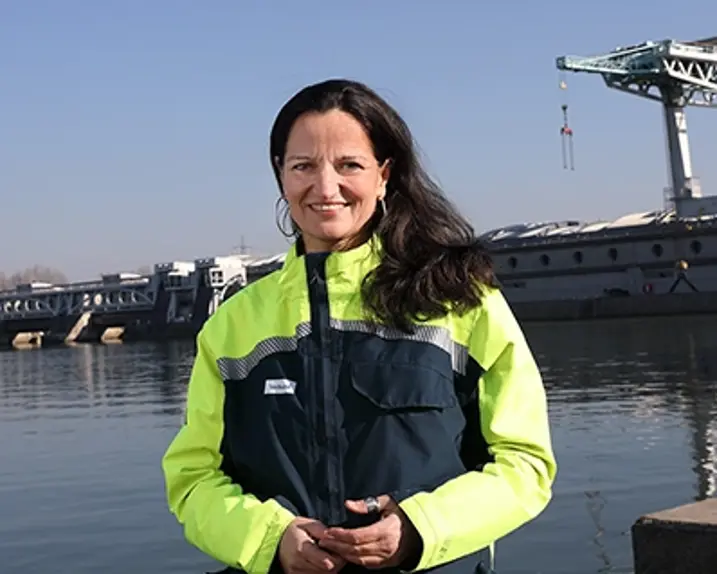Innovative storage technology for renewable energy – Partnership for the future of energy
Integrating renewable energy sources such as solar and wind power into power grids poses a major challenge for the energy system because their generation is highly dependent on weather conditions and time of day. Excess renewable energy needs to be saved, so it is available at a later point in time. This requires different storage options. In this context, VERBUND, Austria’s leading energy company, is working with TU Wien on an innovative technology that could revolutionise energy storage: the oxygen ion battery.
Alexander Opitz, head of the CD Laboratory for Oxygen Ion Batteries and professor of electrochemical energy conversion at TU Wien, recalls that the idea of using ceramic materials for batteries came about by chance: “It wasn’t until we changed our perspective on the material, which was originally intended for fuel cells, that we realised these ceramics can have the same capacity as lithium battery materials under certain conditions. This means that oxygen ion batteries can store a similar amount of energy, but with advantages in terms of resource conservation and safety.”
New options for energy storage
“The energy transition is one of the biggest challenges of our time. It requires not only new technologies, but above all, continuous, intensive research. By collaborating with scientists such as those at the Christian Doppler Laboratory, we can help to make innovations like the oxygen ion battery marketable more quickly and thus help to solve the energy storage problem,” says Michael Strugl, CEO of VERBUND.
The Christian Doppler Laboratory was officially opened on 22 April 2025. It is funded by Austria’s Federal Ministry of Economy, Energy and Tourism. The lab aims to tap into new ways of storing energy and develop the oxygen ion battery into a scalable, cost-effective solution for storing renewable energy.
The Christian Doppler Laboratory, which is operated by TU Wien in cooperation with VERBUND and funded by the Austrian Federal Ministry for Economy, Energy and Tourism, focuses on the development of oxygen ion batteries. These are a promising solution for storing renewable energy. The batteries are based on ceramic materials which, unlike conventional lithium-ion or sodium-sulphur batteries, do not need critical elements such as lithium or cobalt and are also not flammable. By using these abundant and more environmentally friendly materials, the technology will become not only safer, but also cheaper and less dependent on geopolitical resources.
How the oxygen ion battery works
The oxygen ion battery uses the movement of oxygen ions between two electrodes to store energy. During discharge, the ions move from the positive electrode to the negative electrode. During charging, the reverse process occurs. This cycle is fully reversible, making the technology exceptionally durable. The battery must be operated at temperatures between 300 and
500°C to ensure sufficient mobility of the oxygen ions.
Sustainability and versatility for the future of energy
The innovative oxygen ion batteries offer considerable advantages for storing renewable energy. They are suitable for large-scale storage solutions and for smaller applications such as home storage. VERBUND and TU Wien are working intensively on further developing this technology to create a scalable, cost-effective and sustainable alternative to existing storage solutions.
As this technology continues to evolve, the oxygen ion battery could make a significant contribution towards integrating renewable energy sources into the power grid, thus ensuring security of supply in an increasingly decarbonised world. This is another step towards a green and sustainable future of energy.
About the Christian Doppler Laboratory
At the Christian Doppler Laboratory, application-orientated basic research is conducted at a high level, with outstanding scientists collaborating with innovative companies. The Christian Doppler Research Association is internationally regarded as a best-practice example for promoting this collaboration. The Christian Doppler Laboratory is jointly funded by the Austrian government and the participating companies. The Federal Ministry for Economy, Energy and Tourism is the most important public funding provider.
